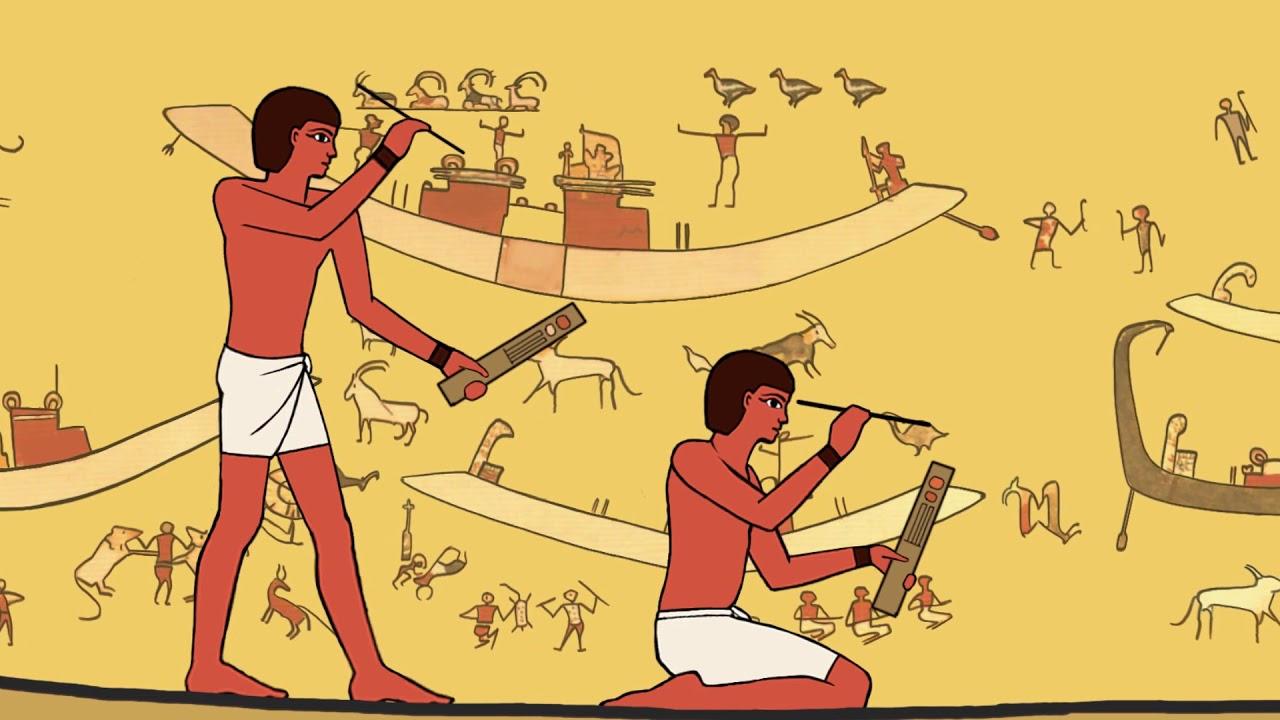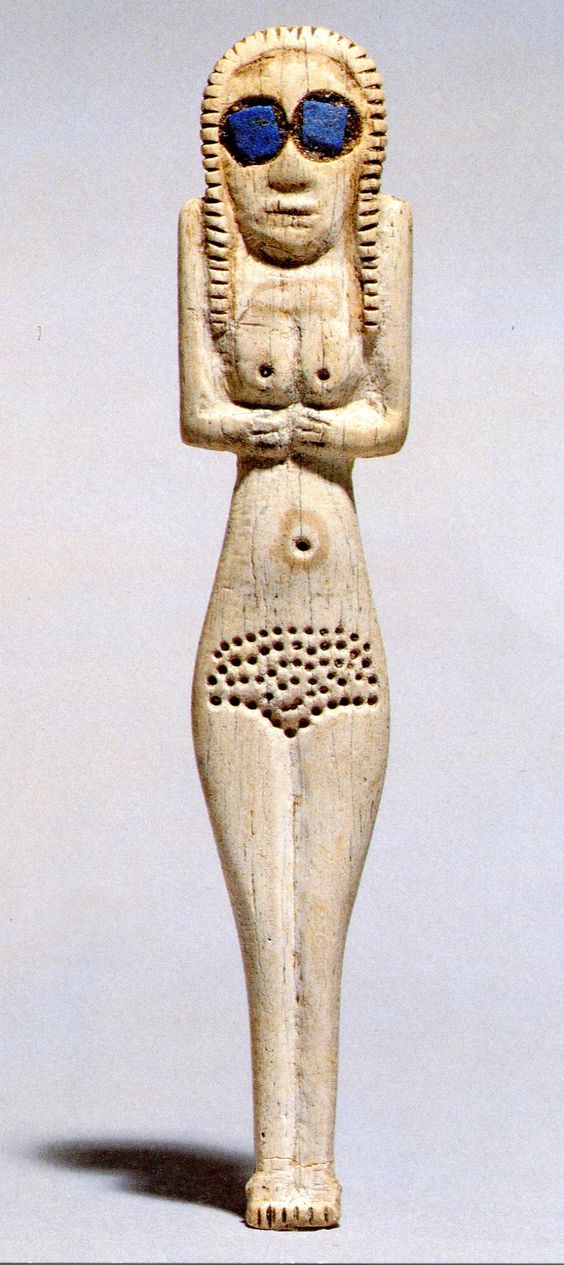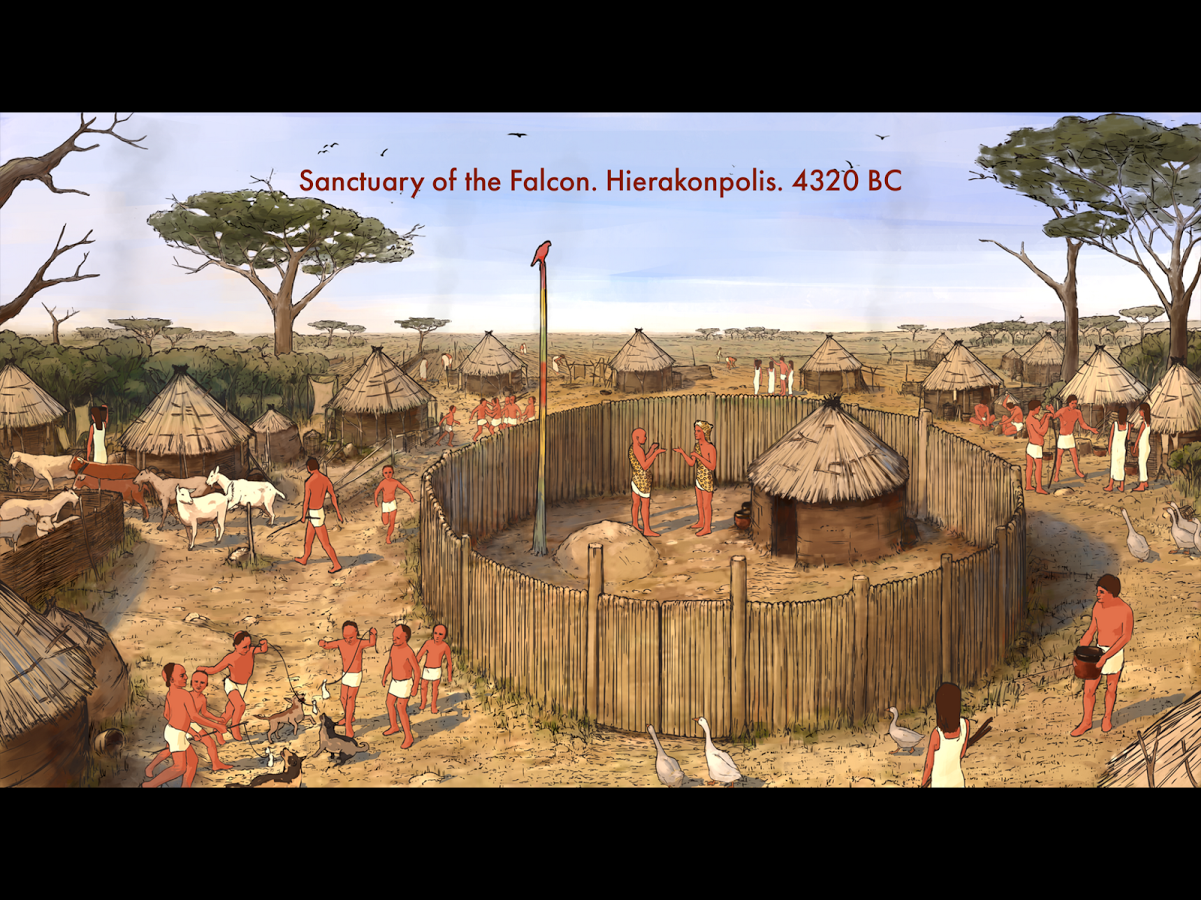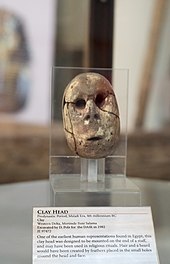
by Aleksa Vučković June 29, 2020 from Ancient-Origins Website Statuette of a woman from predynastic Egypt, 4th millennium BC (CC by SA 2.0)
For decades, the archaeological excavations and the discoveries in the field of Egyptology never ceased to amaze both the scholars and the world. But rarely do we stop to think about predynastic Egypt and the very beginnings of a powerful civilization.
To understand the emergence of the earliest predynastic Egyptian society, we need to reach far back in time.
As Homo Sapiens gradually overtook Homo Erectus, different cultures took the spot, with further advancements in primitive technologies. This society appeared around 45,000 years BC around Maghreb and the southern regions of the Sahara. One thing that is notable for the peoples of this culture is the slow abandonment of the desert regions, and a migration nearer to the fertile valleys of the Nile. They were nomadic, following wild herds and making temporary camps in river valleys.
Nubian Desert (CC by SA 3.0)
It was around this site that the later Khormoussan culture was established. They were known for their technological advancements over time. They mastered the use of stone tools, but also developed use of bone and hematite. It began sometime between 42,000 and 32,000 before present, and ended around 16,000 BC, with the gradual emergence of new, more advanced cultures. One of these new cultures that came afterwards is known as the Qadan culture. It moved into the Neolithic stage of development between 15,000 and 10,000 BC and is characteristic of several areas and settlements. These are the well-known,
The predynastic Qadan Culture had new advancements and characteristics which would be crucial for the gradual emergence of a proto Egyptian identity. They were the first to take some of the earliest steps towards proper agriculture. They prepared and ate wild grasses and grains and made efforts to cultivate and harvest local flora. They also took up hunting and fishing and developed more advanced weapons and tools. During the several millennia of their bloom, the Qadan Culture began using pottery and weaved baskets, and established unique funerary practices that included some early forms of necropolises and similar burial sites. They also developed sickles and grinding stones. Gradually, new cultures took place, each one making new advancements and laying a bigger foundation towards the eventual emergence of the Egyptian Civilization. Artifacts of Egypt from the Prehistoric period, from 4400 to 3100 BC. First row from top left: a Badarian ivory figurine, a Naqada jar, a Bat figurine. Second row: a diorite vase, a flint knife, a cosmetic palette. ( CC by SA 3.0 )
Around 6000 BC, the settlements that are characteristic of the Neolithic period begin to appear around Egypt. Several scholarly studies base this Neolithic emergence around migrants from the Fertile Crescent region of the Near East, who migrated back to Egypt and brought with them agriculture. Flourishing from around 4400 to 3900 BC, and emerging perhaps even earlier, the Faiyum culture marks a period when people of the region were forced to move due to the continued expansion of the desert. This cultural sequence emerged on the northern and northeastern shores of the ancient lake and oasis of the Faiyum district. The inhabitants of its shores were dependent on hunting and fishing and were mostly nomadic and moved with seasonal migrations of large wild herds.
With this cultural trait, we can see the emergence of communities with strong leadership appearing in Egypt.
and moved with their animals from one place to another. Credit: krachapol / Adobe Stock
Badarian culture in predynastic Egypt also displayed complex funerary practices, with oval roofed graves in which the deceased were buried with many grave goods of ivory and stone, and food offerings. Two such large gravesites were discovered, on the edges of the desert, on the eastern side of the Nile between el-Matmar and el-Etmantieh. A carved figure from the Badarian culture, 4000 BC. (Image: British Museum)
Its earliest form emerged around 4,000 BC, and was also called Amratian Culture, or Naqada I. Several things characterize this Chalcolitic culture.
The next step in Naqada culture is the Stage II, also known as the Gerzean culture.
Archaeological evidence of this culture displays new developments in ceramic ware, with unique styles, iconic motifs, and natural imagery. This culture had all elements of a proto Egyptian civilization emerging - from first elaborate burials, necropolises, funerary items, and other elements coming into use. During this period trades outside of Egypt's borders became prominent. Evidence of trade with Sinai and Palestine are found, and a centralized power emerged.
The Gebel el-Arak knife (CC by SA 3.0)
A further development of the preceding Naqada II, this period lasted from 3200 to 3000 BC. This period marked the height of predynastic Egypt's striving towards a political unification and a state formation, and the first mentions of ruling kings of powerful regional political entities known as polities. During this protodynastic period, first shapes of an emerging Egyptian civilization that we know today became visible. The powerful polities that arose in the valley of the Nile were city states, with three most powerful ones being,
And the one that rose on top from these three is the almost mythical Thinis. All sources and evidence point to a location near Abydos, another important Egyptian city. The Bull Palette, a famous piece attributed to the Naqada III period of protodynastic Egypt (CC by SA 3.0)
Thinis managed to successfully conquer Naqada and unify Upper Egypt. It then merged with Nekhen - seemingly without conflict - and conquered Lower Egypt. The rulers of this predynastic period are often termed as 'Dynasty 0'. Still, the pharaoh that united Upper and Lower Egypt in this protodynastic period is not known with certainty. Ancient Egyptian records mention this to be Menes, a ruler of whom no evidence exists. Thus, scholars believe that the unifier of Egypt was most likely Narmer. Narmer can be considered as the 3rd Egyptian ruler whose name is attested and evidenced, after Iry-Hor and Ka. This siltstone palette depicts some of the earliest hieroglyphic inscriptions , and the earliest known depiction of an Egyptian king. On it, intricately carved scenes depict a victorious ruler - thought by most to be Narmer - in a dominant stance with a mace raised high above his head, ready to strike a kneeling prisoner. On this side the ruler wears the hedjet - the White Crown of Upper Egypt. The fact that the king bears both crowns of Egypt - which combined make up the sekhemti (pschent) - the royal double crown of Egypt. Together, they form the phonetic representation of the name Narmer...
The predynastic period serves to offer us a perfect glimpse into the complex process of a developing civilization - a process that lasts for several millennia. It shows us how different groups emerge and disappear, and how each new century placed man one step ahead with new technologies and refined tools.
|
Predynastic Egyptian Kings



Predynastic Palettes of Ancient Egypt Cosmetic and Votive palettes Cosmetic palettes, usually of siltstone (greywacke), have been found in the form of grave goods in cemeteries as early as the Badarian period (c. 5500 – 4000 BCE). Predynastic Egypt and its sequel, Egypt: Old Kingdom, both from Russian studio Clarus Victoria, distil the satisfaction of early-game Civ into a thick marmite, and spread it over two games and around eight hours of play. Predynastic Egypt. All Discussions Screenshots Artwork Broadcasts Videos News Guides Reviews 0 in Group Chat View Stats. Do you know how did Ancient Egypt looked.
Predynastic Egypt Artifacts
Predynastic definition, of, relating to, or belonging to a time or period before the first dynasty of a nation, especially the period in Egypt before c3200 b.c.

